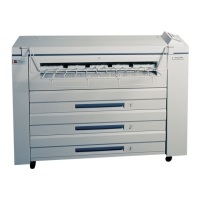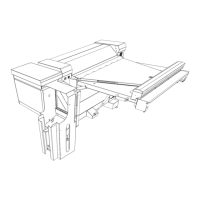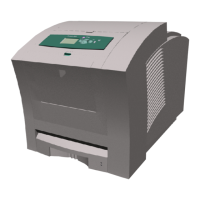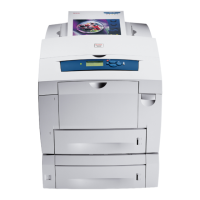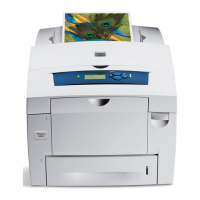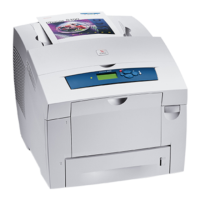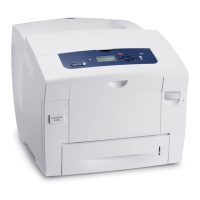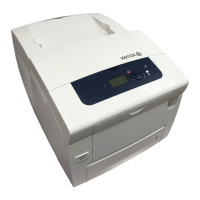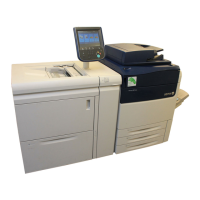03/2003
3-4
8850/ 510DP
Print Quality Definitions
Print Quality
Print Quality Definitions
The following terms are some of the most commonly used terms that describe image quality
problems.
Background
Background occurs as darkness or dirtiness on the non-image areas of the print.
Black Print
This is a print that is entirely black except for the lead edge, trail edge and possibly the left and
right edges.
Blank Print
This is a print entirely without an image.
Deletions
An area of the image where information has been lost. The areas of deletions could be local-
ized or bands from top to bottom or side to side.
Density
The relative blackness between the image and non-image areas.
Fuser Fix
This is a measure of how the toner particles adhere to the media as a result of the fusing pro-
cess.
Print Displacement
Part of the image information is being placed elsewhere on the print or it is completely missing.
The area of the missing information is sharply defined. This is unlike deletions where the
image is not sharply defined or clear.
Print Distortion or Skew
The image is skewed on the media. The image from side to side or lead edge to trail edge is
not parallel to the edges of the print. There is also distortion of the image from one side of the
copy to the other. These defects are a result of a this adjustment of the media transportation
system components.
Light Image
These are prints where the density is lighter than the specified density for the Printer.
Line Darkness
This is the darkness and uniformity for a line.
Misregistration
This is when the distance from the lead edge of the image to the lead edge of the media is not
within specification.
Offsetting
This is the transfer of toner from the print to the Fuser Heat Roll. Sometimes the toner is trans-
ferred back to the print or consecutive prints.
Media Damage
This is any physical distortion to the media that is used in making a print. This distortion may
include folds, wrinkles, etc.
Media Handling
This is the process of transporting the media from the supply area through the xerographic and
the fusing subsystems.
Resolution
The uniformity or clarity of fine line detail.
Residual Image
This is an image that is repeated onto the same print or consecutive prints. The image can
either be a ghosting of the original image or a toner image. The repeated image is usually
spaced 10.375 inches (265 mm) from the original image. This problem can be caused by poor
cleaning of the Drum, a Drum that is worn, or offsetting by the Fuser.
Smear
This is any image defect that occurs in the direction that is perpendicular to media feed and
caused by a difference in the relative motion between the Drum and media.
Solid Area Density
A measure of the blackness of the a solid black image area on the print.
Solid Area Uniformity
The measure of the blackness uniformity of one area of the solid black image to another area
of the solid black image.
Spots
These are defects that are 0.2 inches (5 mm) or smaller in diameter.
Streak
This is any image defect that occurs in the direction of media feed.
Unfused Print
This is a print where the image can easily be wiped off the media. The image has not adhered
to the media.
